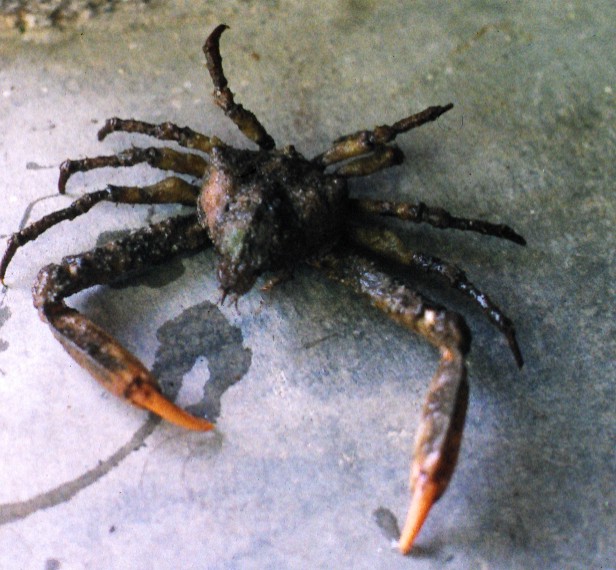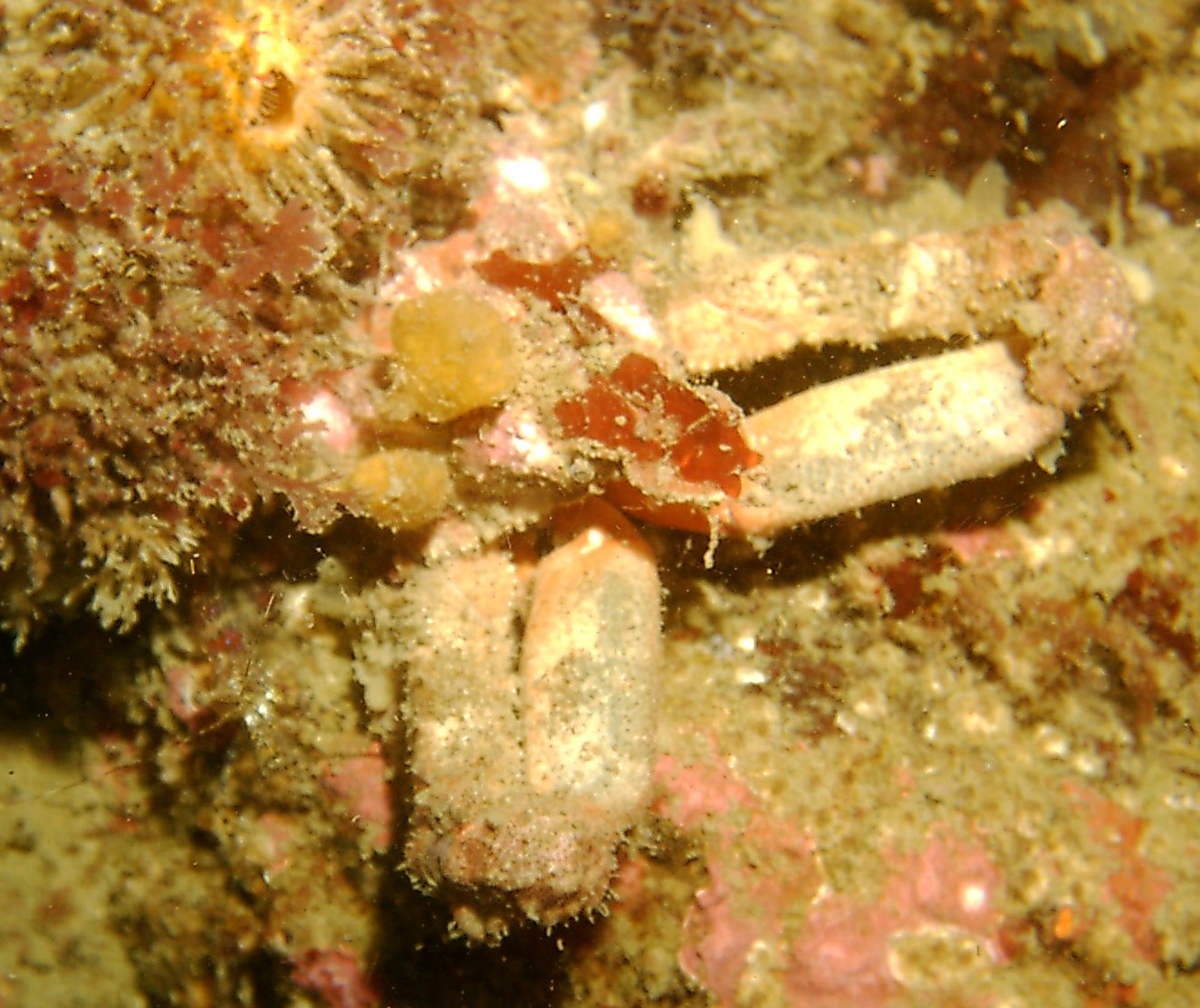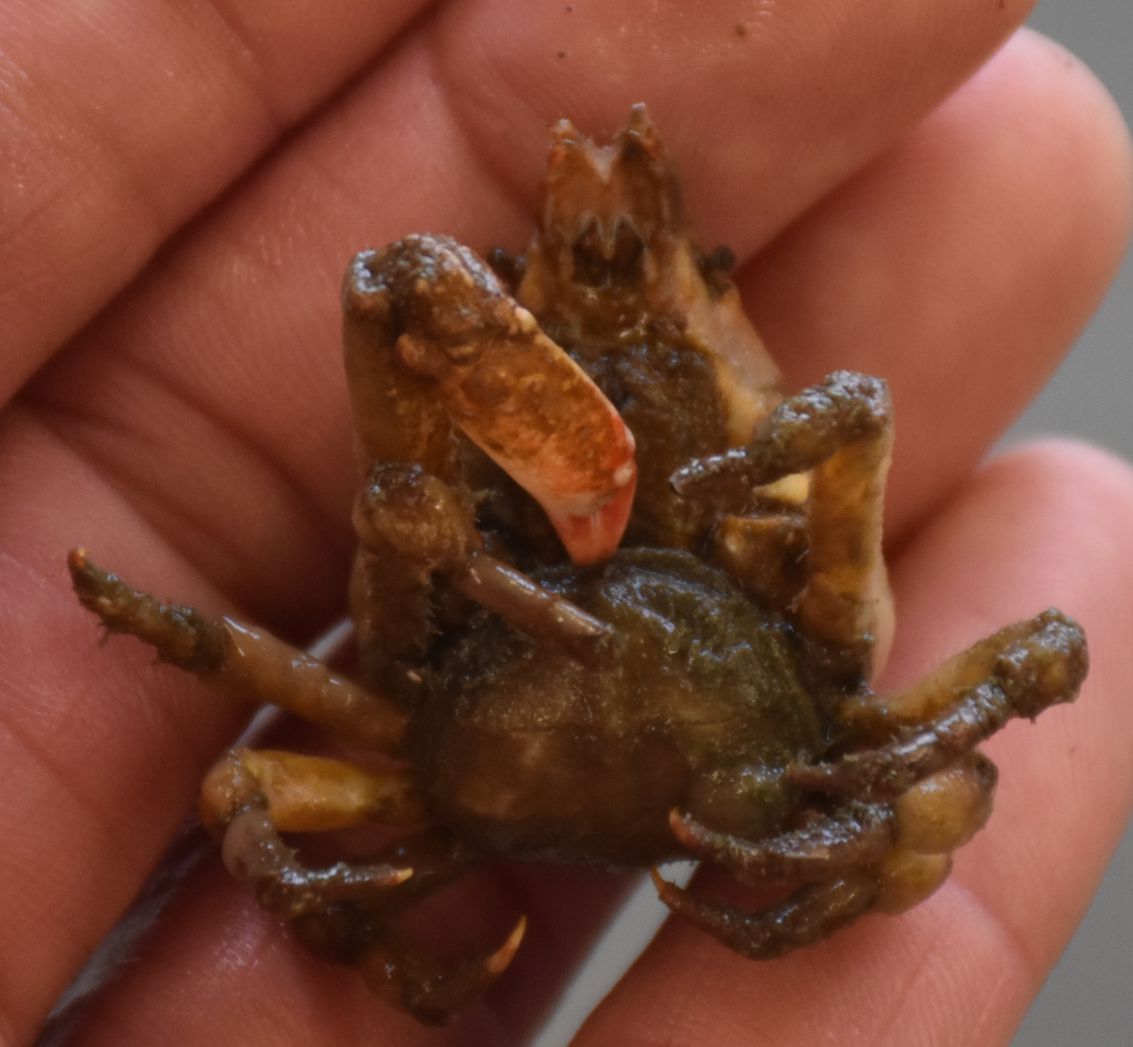Scyra acutifrons Dana, 1851Common name(s): Sharp-nosed crab |
|
| Synonyms: |  |
| Phylum Arthropoda
Subphylum Crustacea Class Malacostraca Subclass Eumalacostraca Superorder Eucarida Order Decapoda Suborder Pleocyemata Infraorder Brachyura (true crabs) Section Brachyrhyncha Family Majidae |
|
| A male Scyra acutifrons from Swirl Rocks, WA. Carapace width about 4.5 cm. | |
| (Photo by: Dave Cowles, July 2000) | |
How to Distinguish from Similar Species: Oregonia bifurca and Hyas lyratus have a lyre-shaped body and a toothed expansion of the carapace on both sides of the anterior half, plus the rostrum is widest at the base. Pugettia gracilis, Pugettia producta, and Pugettia richii have a sharp projection to the side near the middle of the carapace.
Geographical Range: Kodiak, Alaska to Punta San Carlos, Mexico. Uncommon south of Monterey Bay, CA
Depth Range: Mostly subtidal, to 220 m
Habitat: Rocky areas, especially around boulders densely covered with invertebrates. Sometimes found on pilings.
Biology/Natural
History:
Feeds on detritus
and sessile invertebrates. Predators include rockfish (Sebastes
atrovirens, S. chrysomelas and S. caurinus),
kelp greenling
Hexagrammos
decagrammus, and sculpins. Seems to be
often found around
sea anemones. May decorate slightly by putting a few pieces
of algae
on its rostrum. Other algae and bryozoans seem to overgrow
the carapace
naturally. This crab often sits with the anterior end pointed
down.
Females may carry eggs nearly any time of year. May reproduce
several
times a year. This species has a terminal molt so full-grown
adults
will no longer grow (and the carapace
can become overgrown with organisms)
| Return to: | |||
| Main Page | Alphabetic Index | Systematic Index | Glossary |
References:
Dichotomous Keys:Coffin, 1952
Flora and Fairbanks, 1966
Hart, 1982
Kozloff 1987, 1996
Smith and Carlton, 1975
Wicksten, 2009
General References:
Jensen,
1995
Kozloff,
1993
Morris
et al., 1980
Scientific Articles:
Burnett, Nicole, 2024: A practical identification guide to the zoeae of the invasive European green crab, Carcinus maenas (Linnaeus, 1758) (Decapoda: Brachyura: Carcinidae), and to the zoeae of the families of brachyuran crabs in Washington state, USA. Journal of Crustacean Biology 44:4. doi.org/10.1093/jcbiol/ruae064
General Notes and Observations: Locations, abundances, unusual behaviors:

This individual is hiding under a subtidal rock near Rosario.
Underwater photo by Jim Nestler, July 2005
| Gravid female Scyra acutifrons, with a thorax and legs appearing to be encrusted with sponge, photographed by Dave Cowles, summer 2024: |
 |
 |
Authors and Editors of Page:
Dave Cowles (2005): Created original page